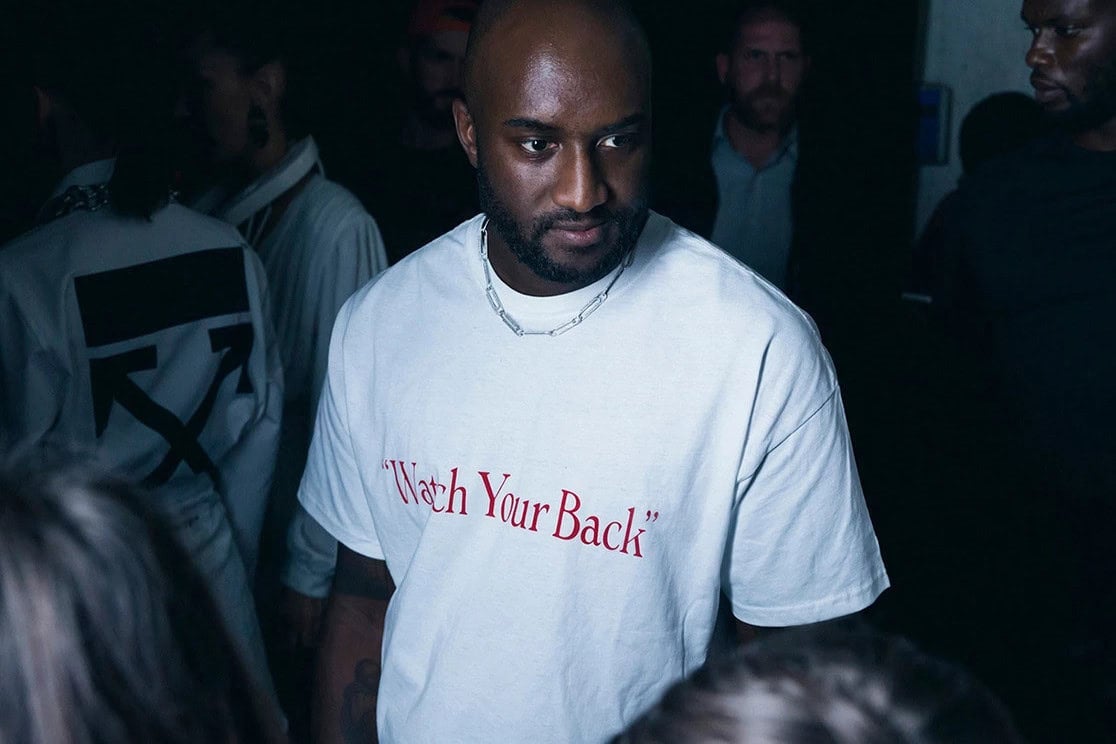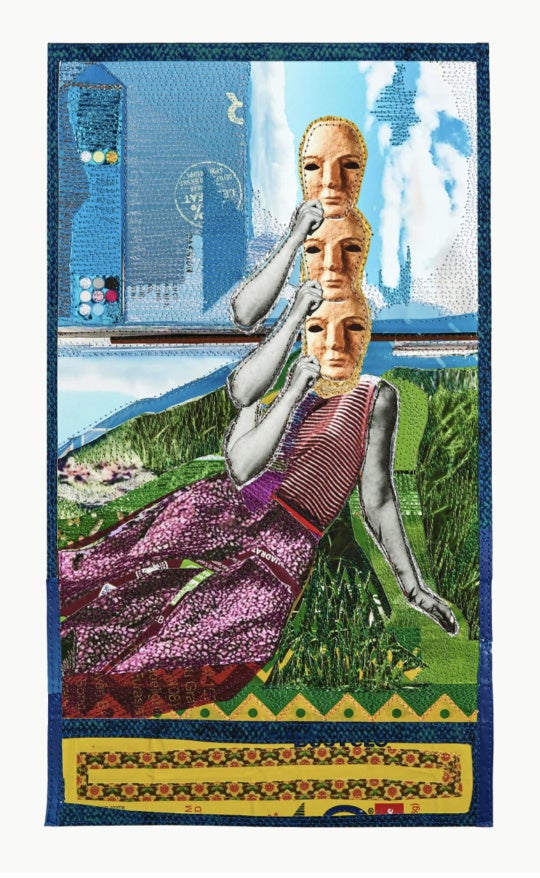
Lately, I have been very concerned with fantasies: what they mean, who gets to have them, who lives them, how they are made. Despite the enormous roles they play in our everyday lives, fantasies are rarely examined sufficiently. Fantasies are accompanied by a rather large entourage of affective ladies in waiting: glamour, wishes, versatility, desire, ingenuity, seduction, mystery—all elements that must work together to make a fantasy effective.
Whether you imagine kissing someone you love under the stars, meeting a hero, or becoming a princess, fantasy is central to how we conceive of ourselves, how we narrate and make sense of our lives. Fantasy is, for better or worse, how we fall in love, how we fashion ourselves socially, and how we protect ourselves from incredible psychic pain. We are actors in the fantasies of others and in our own lives.
But I am tired of being cynical—toward pleasure, toward fantasy. I’m just tired of being cynical.
It was inevitable that high fashion would have to let streetwear in. Between the rapidly accelerating fashion schedule, the juggernaut cultural presence of rap music, and the demands of the internet, streetwear has been flexing some muscle. The real sign that streetwear was moving beyond merely influencing high fashion to taking it over came when—to my horror, in 2012—one of the greatest fashion minds of our time, Nicolas Ghesquière, was fired from Balenciaga and replaced by Alexander Wang. Wang’s youth was not my concern—indeed, Ghesquière was only 25 when he was asked to head Balenciaga. I was horrified because Wang’s appointment meant the end of fantasy. What was seductive about a bunch of white mesh shirts with the parental advisory label on them? Virgil Abloh’s Pyrex Vision was crawling across the fashion ecosystem—Tumblr, LiveJournal, message boards—but I was extremely wary of what he was doing. What wishes are there in streetwear? It was a language for a different kind of reality. Girls aren’t even allowed in streetwear. It was a kind of armor, the uniform for a war that I was desperately trying to avoid.
It didn’t matter; it was all downhill after that. Wang was fired and replaced by Demna Gvasalia, the Georgian founder of hypebeast-catnip brand VETEMENTS. Phoebe Philo, the cool, aloof, intellectual woman who resuscitated Celine, was fired and replaced by the street-slutty aesthetic of Hedi Slimane. Alber Elbaz was fired from Lanvin, a disastrous move that effectively ended the brand. Alexander McQueen was already dead. The message was clear: we were to aspire to t-shirts, hoodies, sweatpants, and Adidas slides. This was the uniform of the fashion elite, and I emphatically decided no.
It was with this jaundiced, widow’s eye that I watched the rapid accession of Virgil Abloh and Off-White.
I hated it. I hated every moment of it. I hated the t-shirts, the Helvetica, the ridiculously long belts that looked like my boyfriend’s ratchet straps, the DJ sets, everything. I couldn’t find an access point into Abloh’s world. I didn’t understand his language. It was weirdly austere, abnormally colored, alien, and foreign, even to me, a person who could at least understand the function of streetwear even if I didn’t like it. I let Abloh roll off of me. I knew no one who owned any of his clothes, no one who professed to even liking any of his clothes, and to this day I’m not sure I’ve seen any of his clothes on an Atlantan. As long as I ignored the Rapper he worked for, I could avoid him. All of this changed after Harry and Meghan got married in 2018.

It was fantastic. Meg was beautiful in Givenchy. Serena Williams wore an incredible fascinator. Meg’s mother wore Oscar de la Renta, and even Harry managed to make that fascist-looking Blues-and-Royals getup look dashing. I was reminded of the sheer ecstasy and fantasy of clothing, and I was back in. Shortly after the wedding, my friend asked me to come work with her on an issue of a fashion magazine in Berlin, maybe write about clothes. Fuck yes. Once there, I finally had to consider Virgil Abloh again. Everything was about Abloh again. He was eclipsing the Rapper who had helped make him so famous. I became close with a copyeditor there, and we enjoyed making “Abloh” shorthand for everything we found distasteful about the aspirational glamour we were manufacturing. It was him I told first about seeing Abloh’s exhibition Figures of Speech.
It’s horrible. But the Virgil Abloh show is quite compelling and maybe even good.
Fuck that is terrible news.
I’m tired of being cynical.

Reader, I wanted to hate it, to hate it with every fiber of my being. But I couldn’t, because it’s very, very good, and hating something popular is not a personality trait. Drawing from Abloh’s expansive archive, the show covers an incredible amount of material. It was overwhelming on my first view, lending itself to second, third, and fourth viewings. Contextualized by his sculptures, his work for the Rapper, his clothes, videos, sketchbooks, tapestries, and carpets, it all made sense. I suddenly understood everything. The smack talk, the god complex, the divine selection: it was all the defensive posture one must adopt under white supremacy, especially if you are rich and successful and in control of the Black cultural capital consumers are gluttonous for. The exhibition suddenly felt insidious and almost dangerous. An arrangement of screens for screen-printing t-shirts ominously reminded me to WATCH YOUR BACK. The giant Cotton logo should be boringly didactic, and it is, but its size and prominence gives it a violent authority that Andy Warhol could never swing. A hazy red screen looping subtitles in a manner reminiscent of Jenny Holzer’s text-based works seems to be providing glimpses into Abloh’s life:
[image of a rapper drinking lean.]
bad conceptual art
These fragments of text made me feel his airport malaise, the unreality of everything once you’ve been on a plane long enough. A neon sign blinked YOU ARE OBVIOUSLY IN THE WRONG PLACE and I was sickened with rage. I could hear every condescending door person, ticket taker, everyone who had doubted that a Black girl should be there, and I felt this rage for Abloh. It shone on an arrangement of police markers used to demarcate bullet casings and on a foam sculpture of a ladder, impossible to climb, collapsing under any weight. This isn’t a joke. There’s nothing to be in on. He is completely without cynicism. He knows he’s not supposed to win.
Last week, during my second visit to Figures of Speech, Meg and Harry announced that they were breaking up with the royal family and moving to Canada. The fantasy was collapsing in real time, the fantasy that brought me back into a world that once gave me so much agonizing pleasure that I would be moved to tears. Why should I care about this bizarre, parasitic institution that our American girl from Northwestern had married into? Because the manufacture of fantasy is the only point of the monarchy’s existence. It is the only point of fashion’s existence.
To royalists and republicans alike, this departure wasn’t a surprise. Given the unrelenting racism Meg faced, the public humiliation from her own in-laws, her full life and career before her marriage, and the constant danger she and her child are in from the same paparazzi that killed her mother-in-law, one wonders why it took them this long. She’s obviously in the wrong place. Her clothes have become dreadfully boring. She can’t even wear red lipstick. She was never supposed to win.
Abloh knows his current fantasy is coming to an end as well. “I would definitely say it’s [streetwear] gonna die, you know? Like, its time will be up. In my mind, how many more t-shirts can we own, how many more hoodies, how many sneakers?”
The answer is none. The whole world is in a state of environmental, political, and humanitarian crisis. My life and many of my friends’ lives are guaranteed to be shorter, poorer, and more dismal than those of any generation since WWI. It’s time that our fantasy world reflected that inescapable dark reality, providing us dreams and wishes that can realistically give us pleasure and joy in this time of extreme psychic trauma. Abloh gave it to me, for a moment. Meg and Harry and Archie moving to Canada gave it to me too. If the Mountbatten-Windsors change their mind about Canada, I’d like to recommend Atlanta, and shopping at Walter’s, the Atlanta streetwear institution since 1956. It’s like a fairy tale in there.
Virgil Abloh: Figures of Speech is on view at the High Museum of Art, Atlanta, through March 8.




